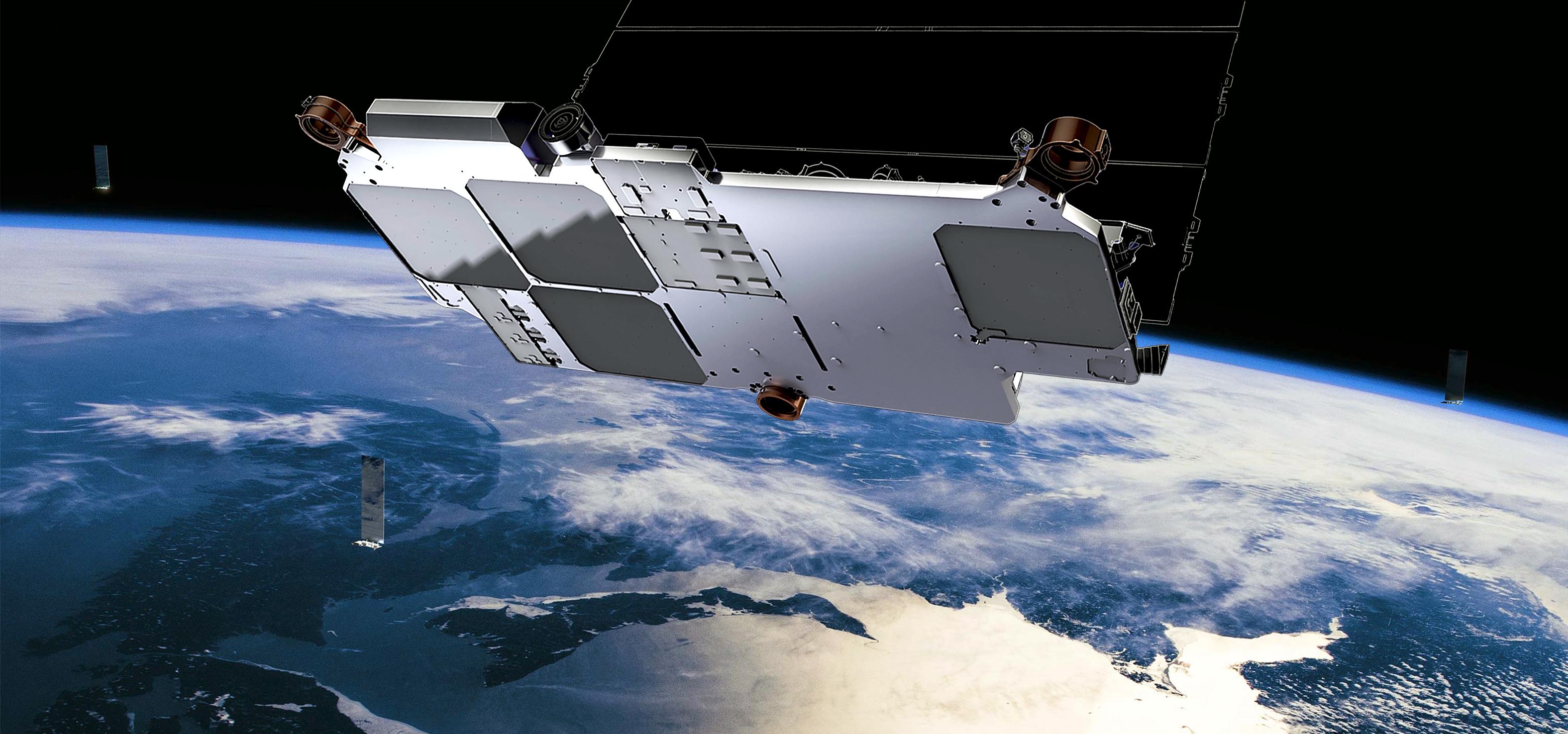

News
SpaceX says upgraded Starlink satellites have better bandwidth, beams, and more
Just hours ago, SpaceX successfully launched its second batch of 60 Starlink satellites, featuring a variety of upgrades as part of the move from v0.9 to v1.0 spacecraft. During SpaceX’s launch webcast, the hosts revealed a number of intriguing new details about those upgrades, shedding a bit more light on what exactly has changed.
SpaceX launched its first dedicated Starlink mission in May 2019, placing 60 “v0.9” satellites in low Earth orbit (LEO) in what was essentially a beta test at an unprecedented scale. At the time, SpaceX and CEO Elon Musk disseminated a substantial amount of information, essentially taking the veil off of (part of) the company’s Starlink satellite program. In terms of the basics, Starlink v0.9 satellites were said to weigh approximately ~225 kg (500 lb) apiece, although the final mass – said to be the heaviest payload SpaceX had ever launched – suggested that that figure excluded the mass of krypton propellant.
All told, Musk said that the payload weighed ~18.5 tons but never clarified whether that was in imperial or metric units, leaving a potential range of 16,700-18,500 kilograms (36,800-40,800 pounds). In general, Musk was quite confident that SpaceX’s custom-built phased array antennas were effectively the best in the world even in their v0.9 beta-test iteration. Additionally, he noted that inter-satellite optical (i.e. laser) links would have to wait a generation or two before becoming part of the operational constellation.
Ch-ch-ch-changes
With SpaceX’s Starlink-1 launch, the second 60-satellite mission, the company debuted Starlink ‘v1.0’ satellites with a range of changes and upgrades that fall under two main categories: structures and communications.
Prior to the November 11th webcast, SpaceX’s official pre-launch press kit was far less revealing than Starlink v0.9’s but did note that v1.0 satellites have been upgraded to be “100% demisable”. This means that when each spacecraft reenters Earth’s atmosphere, everything down to the last shred of mylar is now expected to burn up before reaching the ground, reducing the (already miniscule) risk of debris harming people or property. Similarly, SpaceX implied several months before launch that v1.0 spacecraft would include tweaks to limit their reflectiveness after the astronomy community stoked fears about potential impacts.
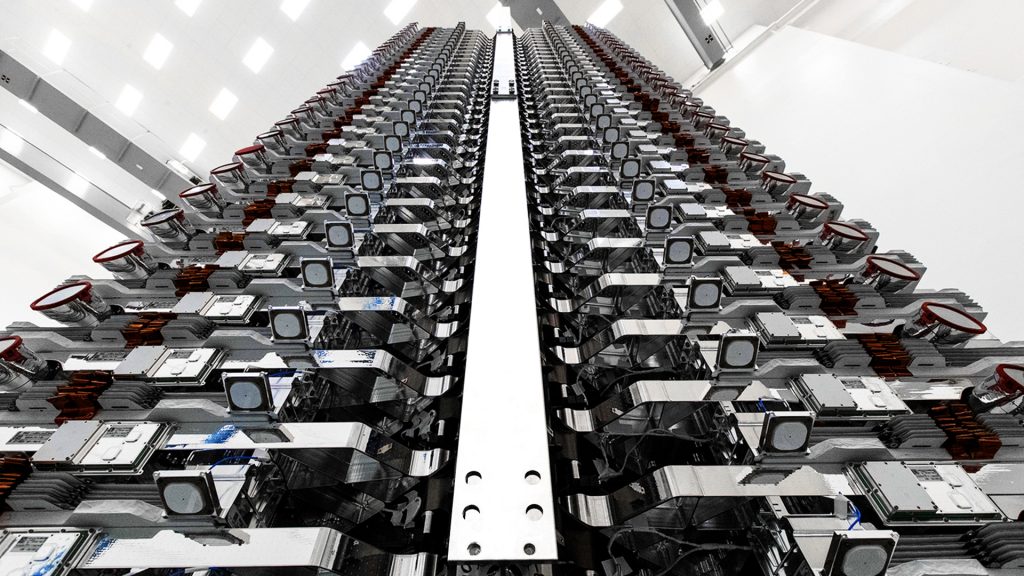
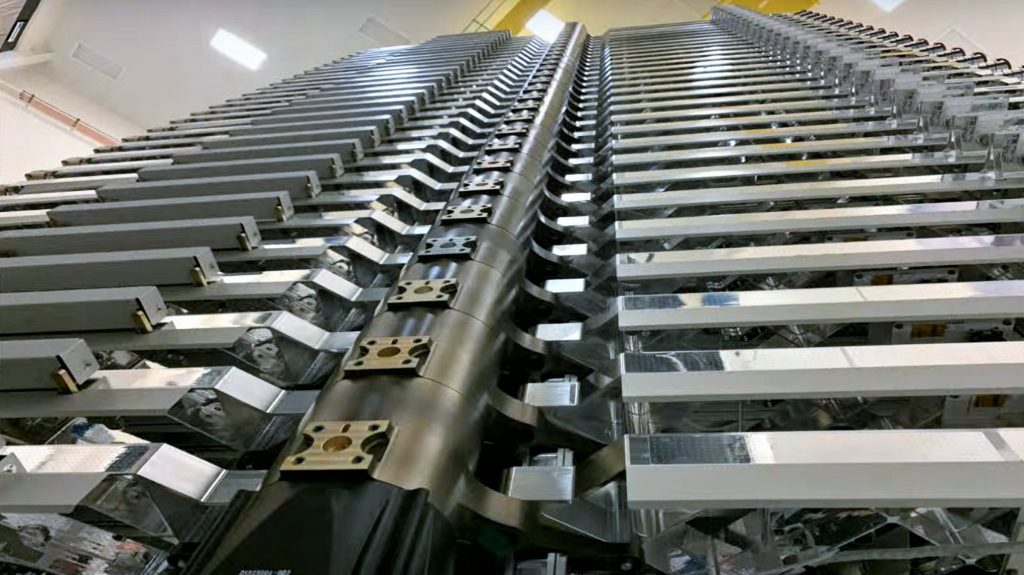
Aside from a general improvement to the overall visual fit-and-finish of the v1.0 spacecraft, SpaceX’s official comments on the matter indicated that the most substantial changes between v0.9 and v1.0 were more related to each spacecraft’s advanced electronics and payloads. In the case of Starlink, each satellite’s primary payload is a high-performance suite of electronically-steered phased array antennas. Initially developed to improve the flexibility of tracking and scanning radars used by military fighter aircraft, phased array antennas (and radar) allow multiple beams to be aimed without physically moving the antenna.
SpaceX says that Starlink v1.0 satellites added a number of Ka-band antennas alongside upgraded Ku-band hardware similar to what was installed on Starlink v0.9. Ka and Ku refer to similar but different communications frequencies, with Ku-band generally offering greater reliability and cloud/rain tolerance, while Ka-band is a bit more sensitive to environmental factors but offers a substantially higher theoretical bandwidth.
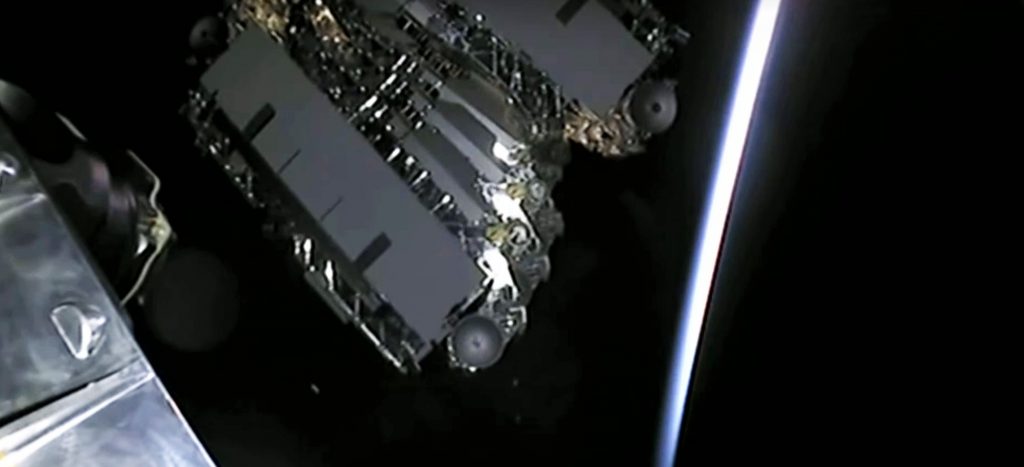
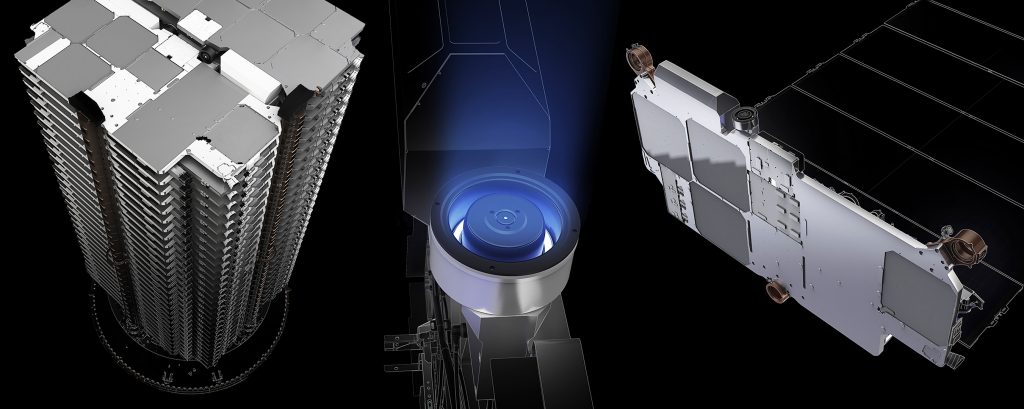
According to SpaceX engineers speaking during the Starlink-1 launch webcast, Starlink v1.0 satellites offer an unexpected 400% increase in overall bandwidth, meaning they can theoretically transmit four times as much data per any given second. Additionally, Starlink v1.0 satellites were said to feature antennas with twice as many steerable beams, meaning that they can effectively serve two times as many regions simultaneously. It’s unclear if the addition of Ka-band antennas is the sole source of these substantial improvements.
Furthermore, during the Starlink v0.9 launch, SpaceX CEO Elon Musk indicated that the 60 satellites represented a bandwidth of more than 1 terabit per second (Tbps), translating to ~17 Gbps per satellite. More likely than not, Musk was speaking aspirational and the v0.9 satellites actually represented more like ~200-300 Gbps worth of throughput, with the additional of Ka-band antennas and perhaps general technology upgrades bringing v1.0 satellites to a nominal ~17 Gbps apiece.
For now, 60 Starlink v1.0 satellites are now in orbit and are rapidly spreading out after their bizarre but effective blob-style deployment. With any luck, all 60 will successfully deploy their solar arrays and begin propelling themselves towards their final operating orbits with krypton-fueled ion thrusters. Stay tuned for updates from SpaceX!
Check out Teslarati’s Marketplace! We offer Tesla accessories, including for the Tesla Cybertruck and Tesla Model 3.
News
Tesla opens massive solar Supercharger station in California
The Supercharger opened to customers ahead of Fourth of July weekend, while Tesla continues phase two of construction on the site.

Tesla has officially launched the first several Supercharging posts at a massive station in California, notably including solar canopies and grid-scale batteries to offer completely renewable charging.
Last week, Tesla announced on X that it opened the first 84 Supercharger stalls of a planned 168-stall station in Lost Hills, California. Additionally, the massive Supercharger project features 11MW of solar canopies and 10 Megapack batteries for off-grid charging powered entirely by solar energy.
Tesla completed the first phase of the project just days ahead of the busy Fourth of July holiday weekend, adding that initial construction took just eight months. In addition to the remaining charging stalls, Tesla says it’s building a set of lounge areas, renderings of which can be seen below alongside current photos of the site.
Notably, the site also includes V4 charging posts for the company’s latest available charging speeds, and it’s located near the busy junction between I-5 and Highway 46 in Kern County.
“Thank you [Kern County] and [PG&E] for collaboration and approvals,” Tesla wrote in a follow-up post.

Credit: Tesla Charging | X

Credit: Tesla Charging | X

Credit: Tesla Charging | X

Credit: Tesla Charging | X
Tesla Supercharger Maps for North America, Europe, and Asia pic.twitter.com/0U5r0XRPyo
— TESLARATI (@Teslarati) July 2, 2025
READ MORE ON TESLA SUPERCHARGERS: Tesla launches ultra-fast V4 Superchargers in China for the first time
Testing at the LA Diner, plus Musk update on potential Tesla solar Gigafactory
The huge Tesla Supercharger station completed phase one of construction fairly quickly, especially given how long Tesla has been working on its unique Los Angeles diner, drive-in, and Supercharger location. Still, the company was seen performing some testing at the nearly-completed charging station earlier this month, and will reportedly be holding a job fair.
Elon Musk also responded on Monday morning to a post on X, suggesting that Tesla is “thinking about” building a U.S.-based solar Gigafactory in order to help support increased power needs with AI growth, and to bolster domestic solar production.
Tesla is building a new UFO-inspired Supercharger in the heart of Alien country
News
Tesla driver walks away from major accident with minor injuries
The driver sustained only minor injuries, and the exact cause of the crash remains under investigation.

The driver of a Tesla Model Y survived and walked away from a harrowing accident on Monday in California, only sustaining minor injuries despite the vehicle being impaled by a guardrail.
On Monday morning around 4:34 a.m., the Los Banos division of the California Highway Patrol (CHP) responded to the accident on I-5 near Panoche Road, involving a 23-year-old in a Tesla Model Y. According to a post on social media, the driver veered off the road for unknown reasons in the northbound lane, before crashing directly into the guardrail and impaling the vehicle.
You can read the full message and photos from Los Banos CHP below, as were shared in a Facebook post on Monday afternoon.
This morning a Tesla model y was traveling in the #1 northbound lane of I-5 north of Panoche Rd. For unknown reasons driver allowed V-1 to veer off the roadway, travel through a dirt center divide, and crashed into the fixed metal guardrail. Lucky for the driver he only sustained minor injuries and was able to walk away. Driving a vehicle requires 100% attention to the road. Avoid distractions and focus on driving.

Credit: CHP Los Banos (via Facebook)

Credit: CHP Los Banos (via Facebook)

Credit: CHP Los Banos (via Facebook)
In a statement to SFGate, CHP officer Myles Anderson said that the driver only sustained minor injuries, while no arrests are made and drugs and alcohol are not suspected to have been involved. The report also notes that Tesla’s “cruise control and lane assistance features” were activated, according to Anderson. However, it’s not entirely clear if this is referring to Supervised Full Self-Driving (FSD), or to the cruise control and lane assist features baked into Autopilot.
At the time of writing, CHP has not yet responded to Teslarati’s request for clarification and additional details on the matter.
Tesla Crash Safety Ratings across its lineup: pic.twitter.com/ny30R7ceji
— TESLARATI (@Teslarati) July 1, 2025
READ MORE ON TESLA SAFETY: Tesla rolls out crucial new safety feature aimed at saving children
The news comes after Tesla has touted its vehicles as incredibly safe for many years. In December, for example, the company highlighted receiving top safety scores from regulators on four different continents throughout the world, including from the National Highway Traffic Safety Administration (NHTSA) and the Insurance Institute of Highway Safety (IIHS) in the U.S.
Tesla has also listed the goal of making its vehicles the safest on the road throughout the years, both in the overall design of its vehicles and in its Autopilot and Full Self-Driving (FSD) programs.
Tesla Model 3 ranks as the safest new car in Europe for 2025, per Euro NCAP tests
Investor's Corner
Cantor Fitzgerald maintains Tesla (TSLA) ‘Overweight’ rating amid Q2 2025 deliveries
Cantor Fitzgerald is holding firm on its bullish stance for the electric vehicle maker.
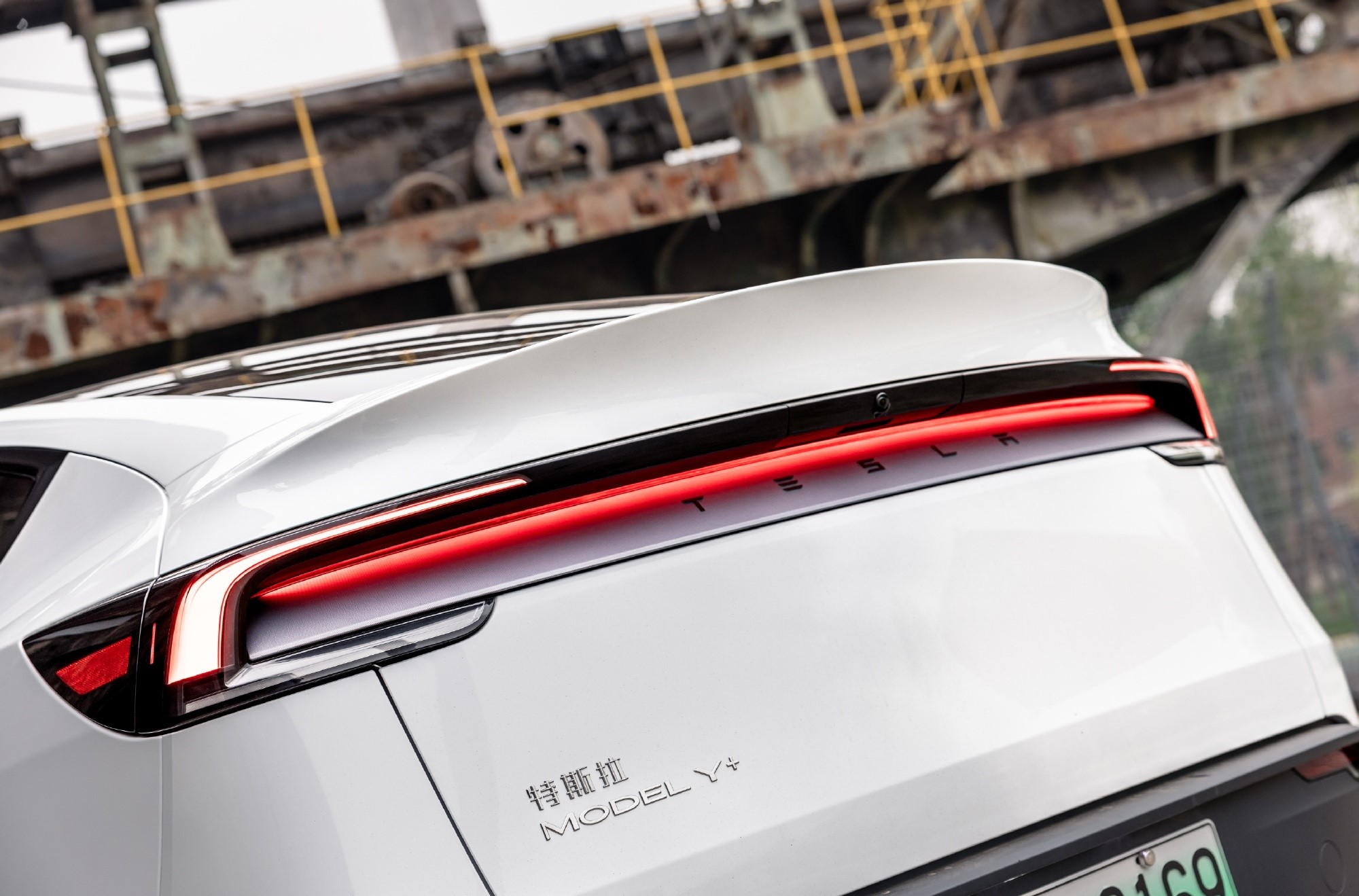
Cantor Fitzgerald is holding firm on its bullish stance for Tesla (NASDAQ: TSLA), reiterating its “Overweight” rating and $355 price target amidst the company’s release of its Q2 2025 vehicle delivery and production report.
Tesla delivered 384,122 vehicles in Q2 2025, falling below last year’s Q2 figure of 443,956 units. Despite softer demand in some countries in Europe and ongoing controversies surrounding CEO Elon Musk, the firm maintained its view that Tesla is a long-term growth story in the EV sector.
Tesla’s Q2 results
Among the 384,122 vehicles that Tesla delivered in the second quarter, 373,728 were Model 3 and Model Y. The remaining 10,394 units were attributed to the Model S, Model X, and Cybertruck. Production was largely flat year-over-year at 410,244 units.
In the energy division, Tesla deployed 9.6 GWh of energy storage in Q2, which was above last year’s 9.4 GWh. Overall, Tesla continues to hold a strong position with $95.7 billion in trailing twelve-month revenue and a 17.7% gross margin, as noted in a report from Investing.com.
Tesla’s stock is still volatile
Tesla’s market cap fell to $941 billion on Monday amid volatility that was likely caused in no small part by CEO Elon Musk’s political posts on X over the weekend. Musk has announced that he is forming the America Party to serve as a third option for voters in the United States, a decision that has earned the ire of U.S. President Donald Trump.
Despite Musk’s controversial nature, some analysts remain bullish on TSLA stock. Apart from Cantor Fitzgerald, Canaccord Genuity also reiterated its “Buy” rating on Tesla shares, with the firm highlighting the company’s positive Q2 vehicle deliveries, which exceeded its expectations by 24,000 units. Cannacord also noted that Tesla remains strong in several markets despite its year-over-year decline in deliveries.
-

 Elon Musk1 week ago
Elon Musk1 week agoTesla investors will be shocked by Jim Cramer’s latest assessment
-

 News2 weeks ago
News2 weeks agoTesla Robotaxi’s biggest challenge seems to be this one thing
-

 News2 weeks ago
News2 weeks agoWatch the first true Tesla Robotaxi intervention by safety monitor
-

 Elon Musk1 week ago
Elon Musk1 week agoA Tesla just delivered itself to a customer autonomously, Elon Musk confirms
-

 News2 weeks ago
News2 weeks agoTesla Robotaxi rollout proves that Elon Musk still delivers, even if it’s late
-

 Elon Musk2 weeks ago
Elon Musk2 weeks agoElon Musk confirms Tesla Optimus V3 already uses Grok voice AI
-

 Elon Musk2 weeks ago
Elon Musk2 weeks agoxAI welcomes Memphis pollution results, environmental groups push back
-

 Elon Musk2 weeks ago
Elon Musk2 weeks agoElon Musk commends Tesla team on successful Robotaxi launch


















